If you want to successfully hunt the southern rut, there’s one thing to make clear: the rut is rarely defined. That doesn’t mean there aren’t peak breeding dates. We know there are because of fawn measurements, but how many, where, and when hunters see bucks in rut in the South can vary based on many factors, including weather and hunter pressure.
And because whitetails in the South don’t have to face challenges like “winter kill,” or worry about extreme seasonality affecting when it’s safe to drop their fawns, there is no singular rut. You’ll hear hunters talk about hunting the “second rut,” or late season rut, which occurs because there are so many does who did not all get bred when they first came into estrus. Yearling does may not come into estrus until later in the season, which prolongs the rut even longer. Does, being polyestrous, come back into heat 28 days later for about 24 hours and are again ready to breed.
To illustrate the wide variance in whitetail breeding behavior, in southern Florida, deer might be rutting in July and August, while deer in the panhandle of the same state are in “peak rut” in February. So to successfully hunt the southern rut, you have to look for signs, scientific data, and advice from experts to understand when the rut is on in these states. With support from onX Ambassadors and our research, here’s a guide to hunting several key southern states during the rut.
What Makes the Rut in the South Unique
Much of the South was “shot out” in the 1900s and there was little left to hunt. Nearly every southeastern state reached its lowest deer population level. In addition to overhunting, increased timber cutting and agriculture destroyed prime deer habitat.
Between the 1920s and 1940s, major efforts to restock whitetail deer populations began, and they were successful. In fact, second perhaps to the wild turkey, the return of whitetail deer in the South is one of our country’s greatest wildlife conservation wins. We owe this, in large part, to the fact that game laws were introduced and state wildlife agencies were established. Just after 1900, wildlife agencies existed in almost every state in the South, and in the decades since, whitetail populations have increased drastically. Where many southeastern states had deer populations of about 50,000 in the 1940s, today there are as many as 1.5 million deer.
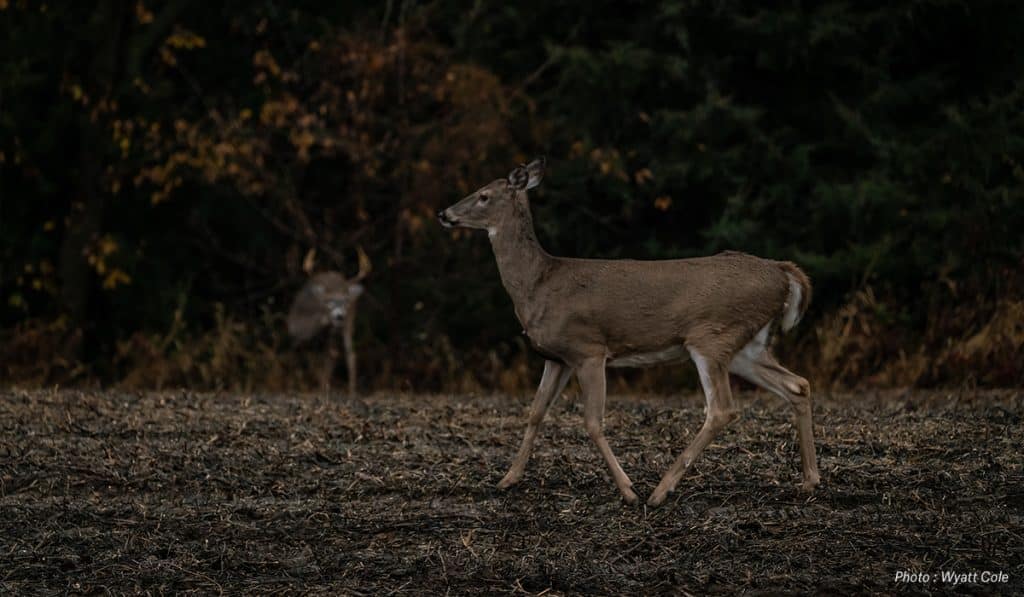
But to get to those numbers, whitetail deer had to be relocated from other parts of the state, and other parts of the country. South Carolina was a little different. Most of its deer population grew from the remnant populations already in its coastal river floodplains. In Georgia, however, the first restocking happened in 1927 when a U.S. Forest Service employee bought five or six deer from a traveling carnival owner and set them free in the Blue Ridge Wildlife Management Area. In Alabama, deer were transferred from other parts of the state, and from North Carolina and Michigan.
Given that one of the leading triggers for the rut is photoperiod, which in whitetails regulates some hormonal production, the South now had deer that had evolved over time being accustomed to the daylight changes in coordination with their latitude suddenly in new places with, in some instances, a drastically different “daylight clock.” Some deer populations have been able to adapt; others have not, so they begin rutting based on their genetics instead of the photoperiod of the current location. As we’ll see in some examples later, deer in the same state, literally living across the street from each other, might start their primary rut months apart.
Let’s take a closer look now at some of the key states in the South to see how they differ from one another and how you can strategically hunt the late-season rut.
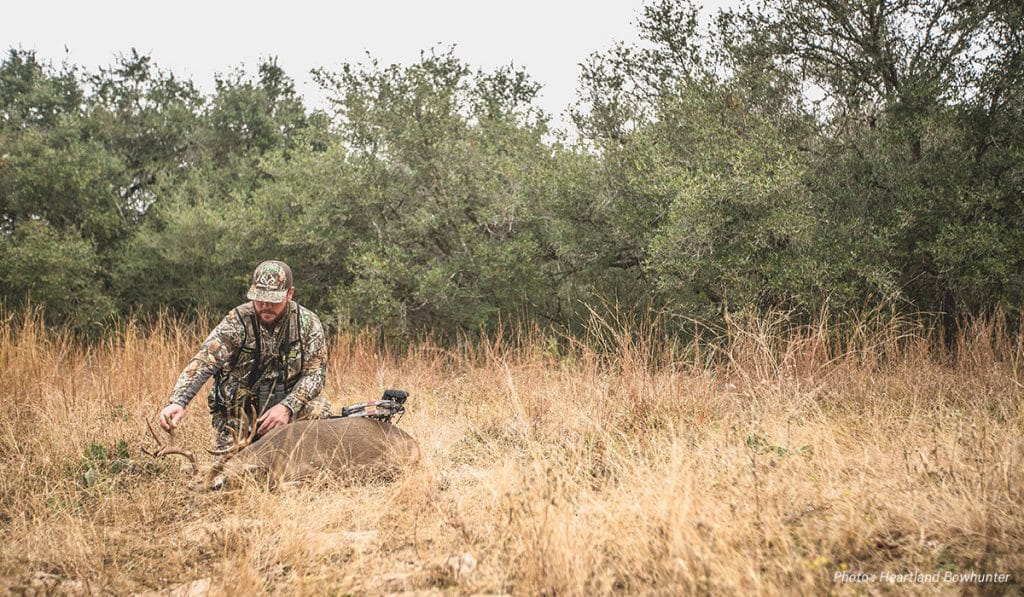
Hunting the Alabama Deer Rut
“If you were to Google search ‘Alabama Rut Map’ it just looks like a weather radar with a hurricane going through,” says Southern Ground Hunting podcast host Parker McDonald. “You’ll have reds and greens, and each color represents a different time frame. Alabama is so spread out. It’s so ridiculous.”
“I’ve got one deer I shot on February 10 that was ‘doggin’ does’ in the primary rut and another buck I shot only 30 miles north of that one, in the same season, that was hot and heavy in the beginning of December,” says McDonald. “And you could be across the interstate from both of these places and the rut will be in November. It’s stupid sometimes. You have to know the rut time for your area because it’s not going to be like the rest of the country.”
Alabama has shown to have five different rutting seasons throughout the state, along with one of the longest hunting seasons in the country – ranging from mid-October to mid-February. That’s because Alabama has a lot of deer and a lot of public land on which to find them. It’s estimated there are between 1.3 and 1.5 million deer in the state that also has 1.3 million acres of public hunting land.
If you want to try to define the primary rutting season in Alabama, statewide, the consensus is between the last two weeks of January and the first two weeks of February, according to Alabama Wildlife and Freshwater Fisheries. This is because of the genetic breeding behavior in the deer that were originally transplanted from southern Alabama throughout the rest of the state.
“Hunting the rut in Alabama is not what you imagine when most people talk about the rut,” says McDonald. “You might see a buck or two on a sit. It’s just not going to be deer running all over the place. For me though, if I see a 100-inch deer chasing a doe, that’s a solid sit.”
“Going into an actual rut strategy,” says McDonald, “the thing I’ve been focusing on is ‘first sit, best sit.’ When you go in for the first time, that’s going to be your best chance at killing a mature deer. What I’ve also learned is there are certain terrain features you can see on a map, like a hard transition between hardwoods to pines, or maybe a clearcut, and maybe there’s a ditch coming out of there close to the transition line, I can pretty much tell you there’s going to be deer there. My strategy is to get as close as I can to the thickest cover that has a hard transition line with a really good terrain feature, whether a saddle or a ditch.”
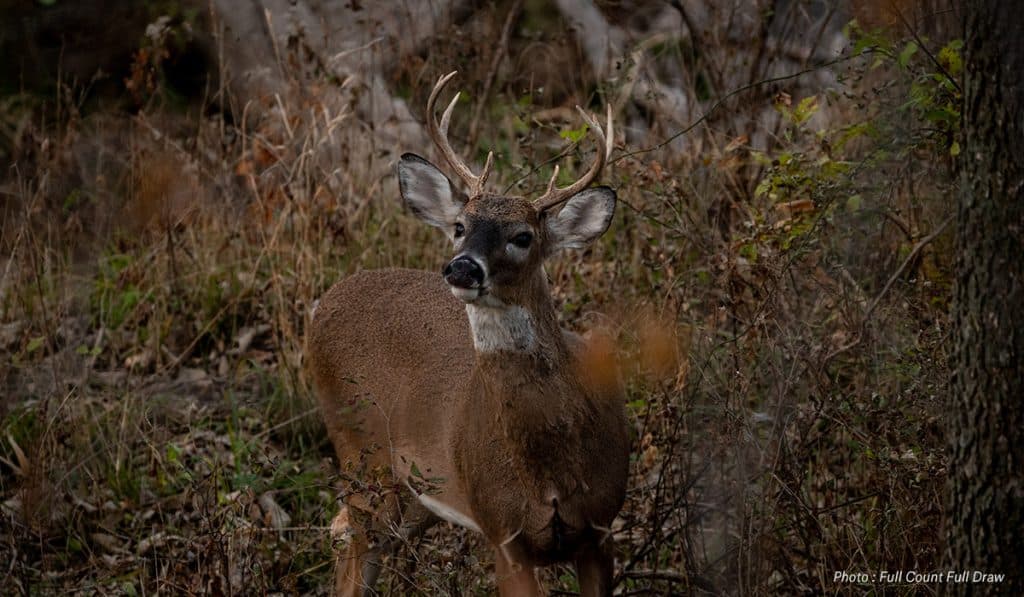
Hunting the Louisiana Deer Rut
Similar to Alabama’s “reds and greens” of different peak rut times, Louisiana throws in some yellows and blues for good measure, and the result is an estimated deer breeding period that spans from the end of September to the end of February.
While Louisiana might not be the hot spot for trophy bucks, the state does boast a high percentage of older-age-class bucks, and the state is broken into 10 different Deer Areas that cover the five distinct deer habitats present there. There are an average of 500,000 whitetail deer in Louisiana, with about 195,000 hunting licenses sold annually.
Even though the rut in Louisiana spans four months of the year, the prime rut time for much of the state is in mid-November, followed by the late-rut in mid-December to mid-January that is especially active in the Delta region of northeastern Louisiana.
To successfully hunt the rut in Louisiana, you’ll want to look for the trifecta of what deer want and need: food, water, and cover. Water is not scarce in the South, so that puts more pressure on finding quality food sources and cover. Look for pinch-points and funnels, like saddles and fence gaps. Deer also love the edges, and they like transitional habitats.
Also, don’t forget the does. Find doe groups and their bedding areas and sit on them. Many southern hunters prefer hunting the secondary rut because it means there are relatively fewer does in heat than in the primary rut, so bucks will be looking for them.
Lastly, look for sign. Bucks create scrapes underneath low horizontal limbs of trees. Some believe they prefer aromatic tree species, which in Louisiana includes cedar, pine, sassafras, and devil’s walking stick. The bucks will scrape a rough circular pattern on the ground, maybe nip a twig on the branch, and urinate on the tree. The scrapes are how whitetails communicate breeding status via pheromones, and does and bucks will come back to them throughout the rut.
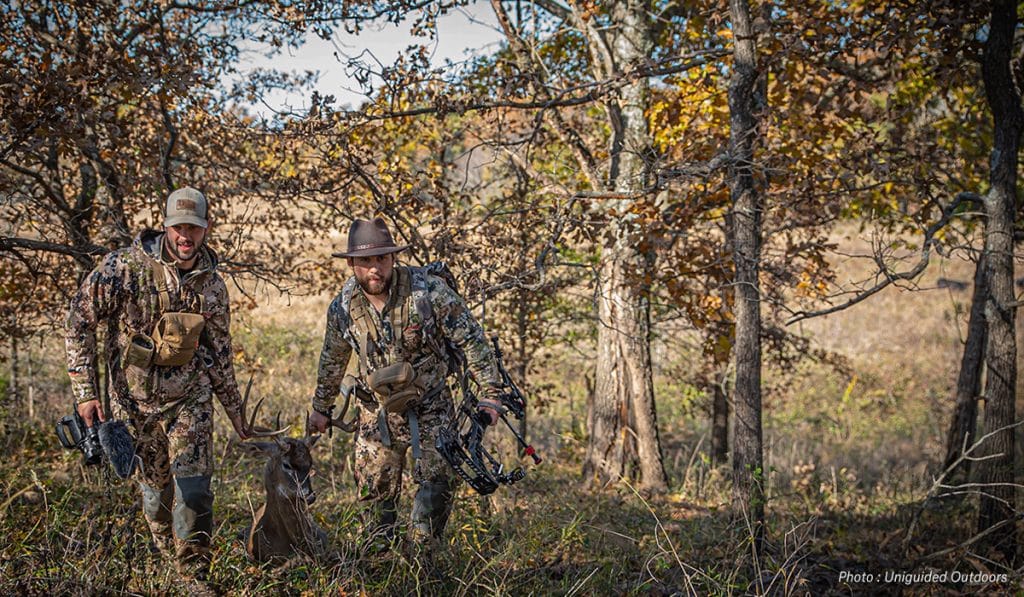
Hunting the Mississippi Deer Rut
Mississippi has the most deer per square mile anywhere in the country, so that’s a good start for hunting the rut. Secondly, Mississippi is number one in the country for the number of mature buck harvests, boasting the fact that mature deer (being 3½ years old and older) make up 74 percent of the state’s buck harvest. Thirdly, the geographic distribution of mature bucks is spreading in Mississippi. It’s no longer about big bucks on the Delta. Mature deer are being managed and harvested around the state.
Mississippi is a tall state, but unlike its neighbor Louisiana, the breeding date range only spans about two months (late November to early February). This relatively shorter window translates into more buck activity in a state that has a lot of big bucks.
“In the first couple weeks they’re laying scrapes,” says UnGuided Outdoors host Benjamin Benfield. “Today and yesterday [in the Mississippi Delta], we’ve probably seen 60 scrapes. They’re laying scrapes everywhere. They’re waiting for that one hot doe to come in and then ‘boom.’ But where I hunt in southern Alabama, they’re not even laying scrapes yet.”
“We’re not hunting food plots because we mostly hunt public lands,” says Benfield. “I like to hunt scrapes and rub lines because I know the bucks are in there. And they’re not worried about feed right now. I also hunt in Missouri, and I have food plots up there, but once the rut comes in I move off hunting those plots because they’re worried about, ‘Here we go, it’s one time a year to make it happen.’”
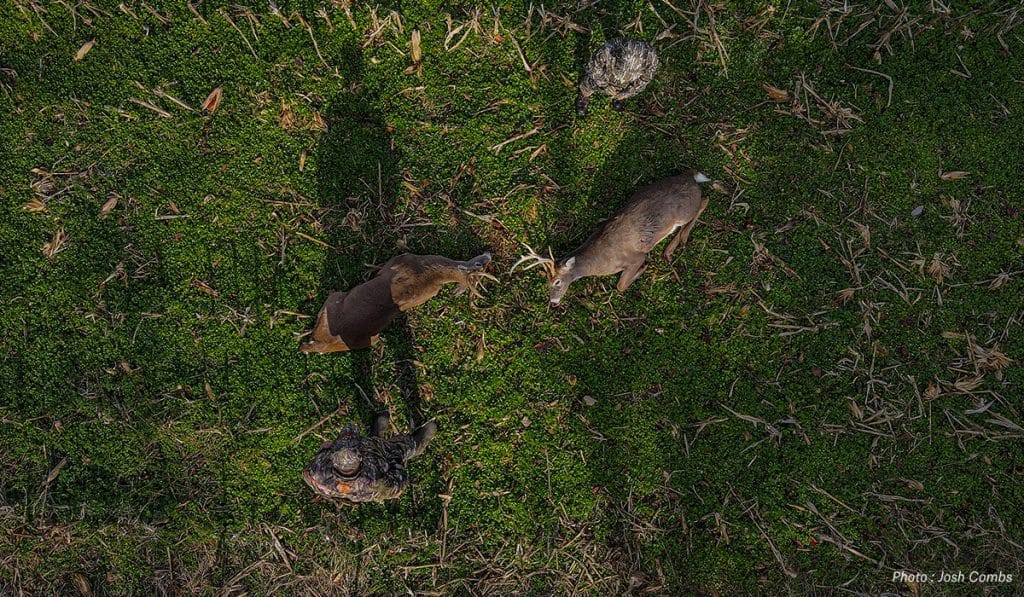
While many hunters think of bucks in rut as “crazed,” they don’t become entirely stupid. They don’t necessarily travel in a straight line following does. If anything, they become efficient in their behavior, traveling the shortest distance that will still give them cover.
“When I first hunted the rut in the Midwest, I was freaking out,” says UnGuided Outdoors host Kyle McDonald. “I’d never witnessed deer coming into rattling antlers or grunts or anything. Because in the South deer in the rut are not aggressive like deer in the Midwest. It’s not that they’re spooked, but they’re just not going to come into a set of horns. If guys were raised like I was, in southern Alabama, they probably never see a rut and wouldn’t know there’s anything different going on in the rut, other than maybe bucks are coming out into the field or they’re not. It’s definitely different. They still chase but you don’t see it as much in the South.”
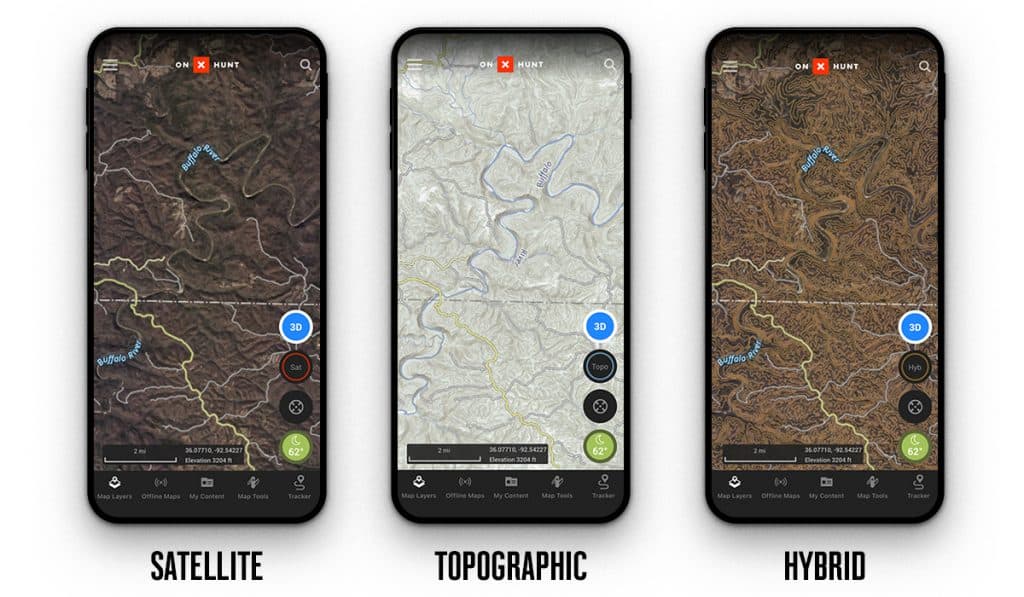
Use onX During the Secondary Rut
The onX Hunt App has several features that hunters in the South rely on for hunting the rut and secondary rut.
Aerial, Topographic, Hybrid, and 3D Basemaps
onX Hunt uses four types of Basemaps. The Aerial Basemap is satellite imagery of terrain. The Topo Basemap is a two-dimensional representation of a three-dimensional landscape, like a traditional topographic map. The Hybrid Basemap is a blend of Aerial and Topo, adding contour lines to satellite imagery. The fourth, and newest, mapping option is 3D Maps. With this variety, you’ll be able to visualize those transition lines between clear-cuts, hardwoods, pines, or any other vegetation or terrain.
Taking note of what Benjamin Benfield does on his own property, he puts up trail cameras on all the scrapes he finds. What he has learned is that it’s not just one buck that visits those scrapes. He’s documented as many as 15 bucks visiting them. With Photo Waypoints, you can document the biggest buck captured on each scrape.
When you know you’ll be sitting and waiting for a buck to move through, or you’re looking for weather indicators that will trigger rut behavior, it will help to have the most accurate weather forecast available for the exact spot you’ll be hunting. The updated Weather Feature in onX Hunt will give you hour-by-hour forecasts for wind and precipitation, and it will help you visualize expected rain amounts, wind speed and direction, and barometer pressure.